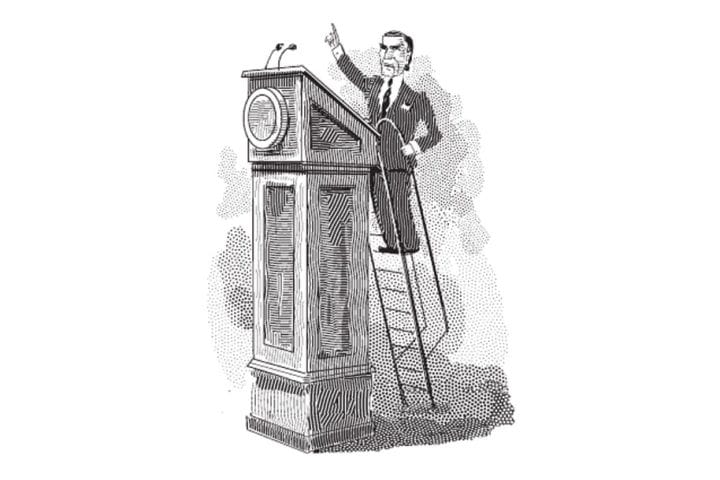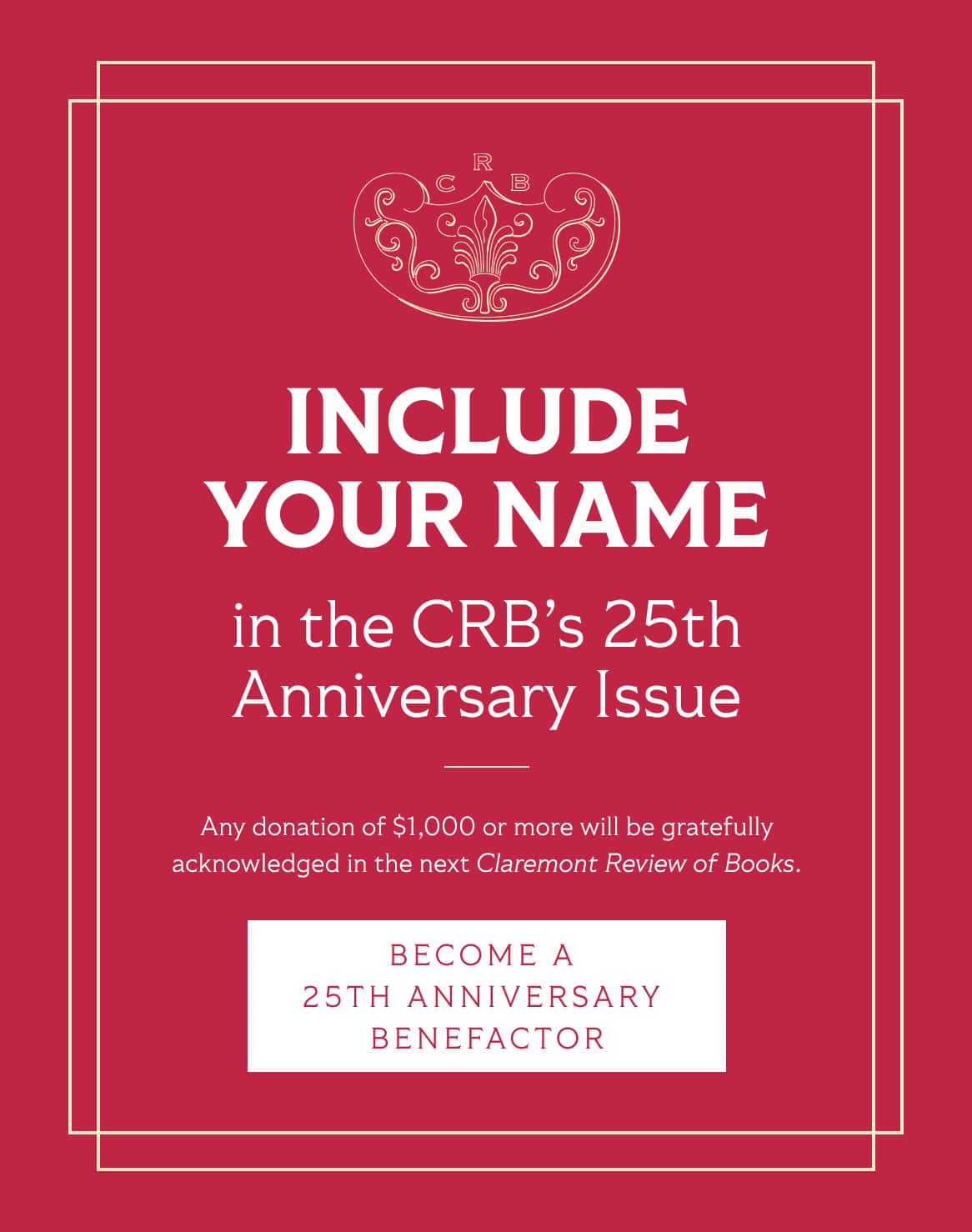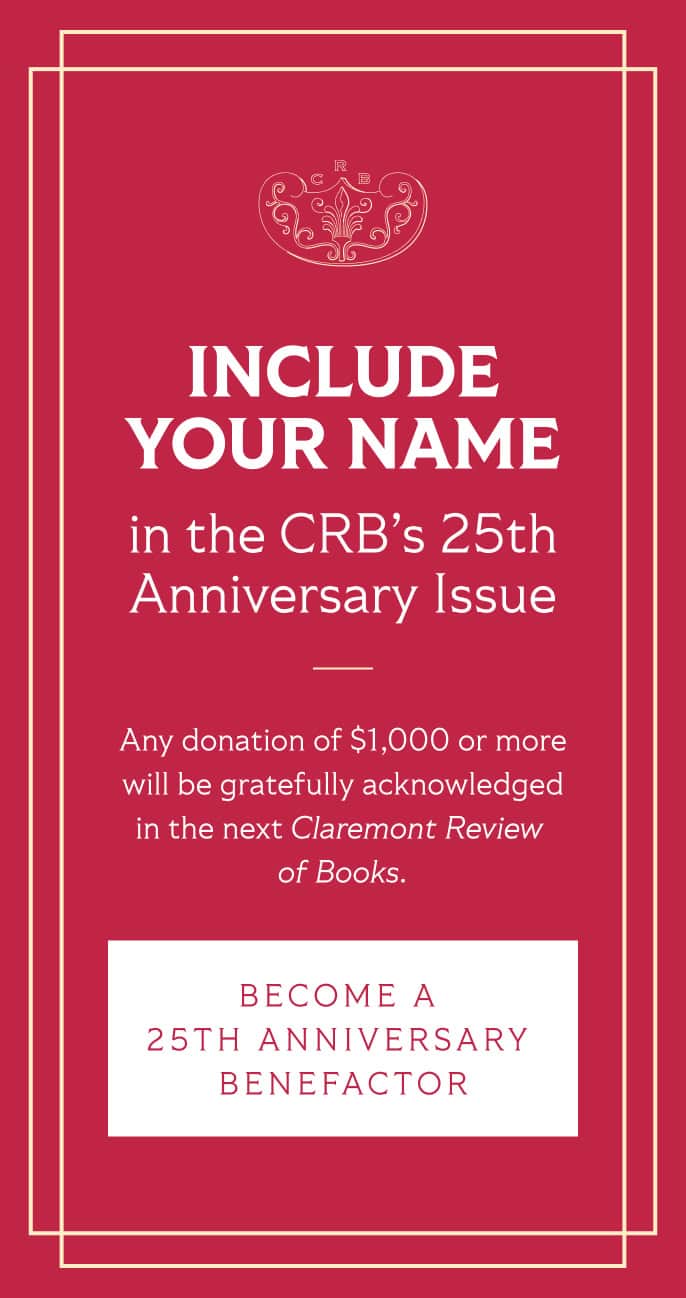Books Discussed in this Essay:
The Official Handbook for Boys, 1st Edition
Boy Scouts' Handbook, 12th Edition
The Boy Scouts of America celebrated their hundredth anniversary last year, and this year is the centennial of The Handbook for Boys, their first official manual. Comparing it with the current edition of the handbook—the 12th, published in 2009—shows that the small outpost of civilization manned by the Scouts holds on bravely in America. But decades of aggressive political correctness have had their effect, and the Scouts have lost some of the confident American boyishness that loves heroes and makes for heroes. This is too bad for the more than 3 million boys enrolled in the Scouts today, and for the society in which they will grow up to become men.
The Original Handbook
The Boy Scouts were founded in Britain in 1907 by Robert Baden-Powell, a lieutenant-general in the British army who authored a series of military training manuals, including one for boys. Scouting was made American in 1910, and since 1911 the Boy Scout Handbook has accompanied every Scout as he ascends in rank, providing "advice in practical methods, as well as inspiring information." By the time he reaches Eagle Scout, a Scout's handbook is dog-eared and well worn, his achievements and camping trips logged in the back.
The first edition of the handbook is beautifully written and endless fun to read. It bursts with information, featuring chapters on Scoutcraft; Woodcraft; Campcraft; Tracks, Trailing, and Signaling; Health and Endurance; Chivalry; First Aid and Life Saving; Games and Athletic Standards; and Patriotism and Citizenship. Teaching through stories and examples, it is an invitation to challenge and adventure. Reading it makes you think it no accident that 11 of the 12 men who have walked on the moon were Scouts. "Do you love the woods?" asks Chief Scout Ernest Thompson Seton at the beginning of the handbook. "Do you desire the knowledge to help the wounded quickly, and to make yourself cool and self-reliant in an emergency?" In the chapter on Scoutcraft you learn that the pioneers and the military "scouts of old…left everything behind them, comfort and peace, in order to push forward into the wilderness beyond," and the Boy Scouts must do the same.
The early pages of the 1911 handbook explain that a Scout must learn "riding, swimming, tramping, trailing, photography, first aid, camping, [and] handicraft," and nearly two thirds of the manual is devoted to teaching these outdoor skills. There are diagrams showing 15 or 20 different knots; how to make a bow and arrow; Morse, Myer, and Semaphore code; the difference between dog, cat, and muskrat tracks; the proper method for paddling a canoe; the Pleiades; and the fireman's lift. The manual's chapter on First Aid and Life Saving covers all manner of crises, including the usual burns, scrapes, and scalds, but also snake bite, frost bite, runaway horses, and mad dogs: "The first thing to do is kill the mad dog at once…."
Being a Scout means camping, hiking, and paddling canoes, but Scouts must learn "Life-craft as well as Wood-craft," moral virtue and patriotism along with knowledge of the outdoors. In the original handbook, Scouts' honor is explicitly traced back to the chivalry of the ancient knights. The Pilgrims and the American pioneers carried this knightly virtue to America, and the Boy Scouts of America (BSA) have taken up their standard. Honor, as the handbook explains, is sacred to a Scout: It "will not permit of anything but the highest and the best and the manliest." "A good Scout must be chivalrous," it tells us:
[H]e should be as manly as the knights or pioneers of old. He should be unselfish. He should show courage. He must do his duty. He should show benevolence and thrift. He should be loyal to his country. He should be obedient to his parents, and show respect to those who are his superiors. He should be very courteous to women. One of his obligations is to do a good turn every day to some one.
The handbook doesn't shrink from invoking shame to motivate Scouts. For example, under Courage: "It is horrible to be a coward. It is weak to yield to fear and heroic to face danger without flinching." There are examples, like the dying Indian who "faced death with a grim smile upon his lips and sang his own death song" and the cowardly knight who fled the battle of Agincourt, much to the disappointment of his lady at home. The original handbook teaches through heroes, providing Scouts with a host of manly examples to emulate. Above all, it cultivates spiritedness, teaching Scouts to defend their honor, their friends, and their country like the great men of the past who "were accustomed to take chances with death" for the sake of the things they loved.
The original handbook assumes that one must know something about the United States to be a citizen of it. The chapter on Patriotism and Citizenship is long and impressive. Several pages detail the first singing of the Star-Spangled Banner, the meaning of the stars and stripes, and rules for flying, folding, and retiring the flag. Much of the chapter is a lesson in American history, covering the Revolution, the War of 1812, the Mexican War, the Civil War, the Spanish-American War, and the gradual conquest of the frontier.
We learn about America's great moments through the heroes who lived them: George Washington, John Adams, Benjamin Franklin, Thomas Jefferson, Daniel Boone, Betsy Ross, Johnny Appleseed, and most of all, Abraham Lincoln. Lincoln is a hero among heroes, a central figure in the handbook's discussions of patriotism and of virtue. He is "in heart, brain, and character, not only one of our greatest Americans, but one of the world's greatest men." The manual relays the whole story of his life, from his lowly beginnings that taught him the value of hard work, to his education, and to his presidency and untimely death ("the emancipator of the slave, the friend of the whole people and the savior of our country died, a martyr to the cause of freedom.") This discussion ends with the closing paragraph of the Second Inaugural, "words with which every boy should be familiar, voicing as they do the exalted spirit of a great and good man."
After the history comes a lesson in American government, covering the role of the president, congress, and the courts; majority rule; the difference between local, state, and federal governments; and property rights. The civics lesson is mostly reliable, though written as it was at the height of American Progressivism, it shows some Progressive tendencies, for example in a brief discussion of trust-busting. But it is largely the manly and independent Progressivism of Teddy Roosevelt, an ardent supporter of the BSA and its first and only Chief Scout Citizen. Further along on the Progressive highway, the new handbook suffers from the influence of a cultural liberalism that goes much deeper and is not nearly so benign.
The New Handbook
The Boy Scouts of America have endured their share of criticism over the years, to be sure. Before the First World War, they were accused of being militaristic. More recently, they have been attacked for excluding girls, for insisting that belief in God (any god) is a requirement of citizenship, and especially for being anti-homosexual. This last indictment has taken the BSA all the way to the Supreme Court; in Boy Scouts v. Dale (2000), the Court upheld the right of the organization, as a voluntary association, to refuse to hire homosexual scoutmasters. Criticism on this theme has continued since the ruling, and seems to have gotten even nastier in the ensuing decade. The Boy Scouts today bear the scars of these attacks, and their latest handbook reveals that they have succumbed in some ways to these relentless demands for political correctness.
The new handbook retains the traditional focus on the outdoors, with much of the same information on how to camp, hike, fish, sail, and fend for oneself in the wilderness. But its discussions of these things have been pared down and lack the verve, punch, and adventurous spirit—the manliness—of the original handbook. Whereas the first edition imparts tough-minded common sense, the 12th edition brims with cautionary tales and safety checklists, emphasizing timidity rather than adventure. The front cover contains a pull-out manual for parents on How to Protect your Children from Child Abuse. It's as if the first thought our boys should have is that they are potential victims.
The old handbook takes a soldierly approach to health and nutrition that sounds amusing to our 21st-century ears ("a boy ought to take a good soap bath at least twice a week"; "the average boy ought to have and usually does have an appetite like an ostrich.") But one has to admit that its advice is generally sound. The new handbook, concerned and cautious, includes diagrams of the food pyramid and a lesson on how to read nutrition labels. Several pages of the nutrition chapter are devoted to the dangers of smoking and drinking, including page-long infographics on how to resist peer pressure and what will happen to your lungs if you smoke. The Introduction boasts that this is the first green edition of the handbook, printed on recycled paper.
Its discussions of character and of citizenship are very different, too. Character formation is still a top priority for the BSA, but the latest handbook has largely replaced the traditional language of virtue with the progressive language of leadership, and this is not an improvement. The chapter on Chivalry has been completely removed, and the chapter on Leadership, which is presumably meant to replace it, has little to say about moral virtue beyond the Scout Oath and Law. Instead, it presents the EDGE method of teaching (explain, demonstrate, guide, and enable), describes the difference between short term and long term goals, and lists tips for using the internet to become a leader in your community. These may be tools of leadership; but tools are useless or worse in the hands of the wrong people and, compared to the original, the new handbook does little to explain how not to be the wrong kind.
Boy Scouts are still taught to follow their consciences: do the right thing, even though it may be difficult, which is sensible advice as far as it goes. But it does not go far enough. The old handbook treated the subject as if the conscience needed to be formed before it could be followed. Scouts needed to be habituated to the virtues through study and practice, dutifully doing the right thing until it became second nature. This was a stern discipline. Many would not succeed at it; those who did could be proud.
Today, there is a different approach to leadership: "success begins with a vision—picturing yourself where you want to be." And because anyone can have a vision, anyone can be a leader. "You are a collection of wonderful talents, ideas, and experiences," the new handbook's Leadership chapter begins. "What do you want your future to look like tomorrow?"
The old handbook spoke proudly of the chivalric tradition; the new apologizes for the antiquated example of the knights. It sandwiches a few cursory paragraphs on moral virtue between a lengthy discussion of drugs and alcohol and a section on sexual responsibility. Moral choices are reduced to healthy choices. Doing the courageous thing becomes equivalent to refusing a cigarette at a party.
Instead of an exciting chapter on Patriotism and Citizenship, the handbook now offers a perfunctory discussion, re-titled just "Citizenship." In the new handbook Scouts are citizens of their country, but also of the world. There are the same detailed instructions for folding and flying the flag, but the accompanying history lesson has been shortened and stripped of its vividness. There are, by my count, four heroes in the book. They are the founders of Scouting: British founder Robert Baden Powell, the naturalist Ernest Thompson Seton, outdoorsman Daniel Carter Beard, and James E. West, who led the BSA through its first 30 years. Each gets a sentence and a picture. American heroes, so numerous and colorful in the original handbook, are almost absent. Washington and Lincoln are each mentioned one time. Here is their sentence: "We remember the sacrifices and achievements of Americans with federal holidays, including observances of the birthdays of George Washington, Abraham Lincoln, and Dr. Martin Luther King, Jr."
Private associations like the Boy Scouts are precious nurseries of civic virtue, all the more precious because our public institutions have become so incapable of bolstering our democracy and teaching our citizens to make the most of their freedom. The first American Boy Scouts imagined themselves as unofficial defenders of the nation and the good things in it. Like the army scouts, a Boy Scout belonged "on the danger line…or at the outposts, protecting those of his company who confide in his care." Now it is the Boy Scouts themselves who are in danger.
Robert Mazzuca, the Chief Scout Executive of the BSA, has been quoted as saying that the organization is suffering from "a little arthritis" but is making efforts to modernize. If this means using Gore-tex boots on hikes and ripstop nylon tents instead of canvas, the Boy Scouts may be all right. If it means teaching leadership rather than moral virtue, and timidity rather than manliness, that's another story entirely—one of obtuseness, trendiness, and decline.
Yet even today, all Boy Scouts swear the Scout Oath: "On my honor I will do my best to do my duty to God and my country, and to obey the Scout Law; To help other people at all times; To keep myself physically strong, mentally awake, and morally straight." The oath is in spirit and in substance essentially the same as the oath Scouts took a hundred years ago. In this and in many other ways today's Boy Scouts are as good as ever, and better than their handbook. But their handbook suggests what their leadership believes, and foreshadows what they may become.






